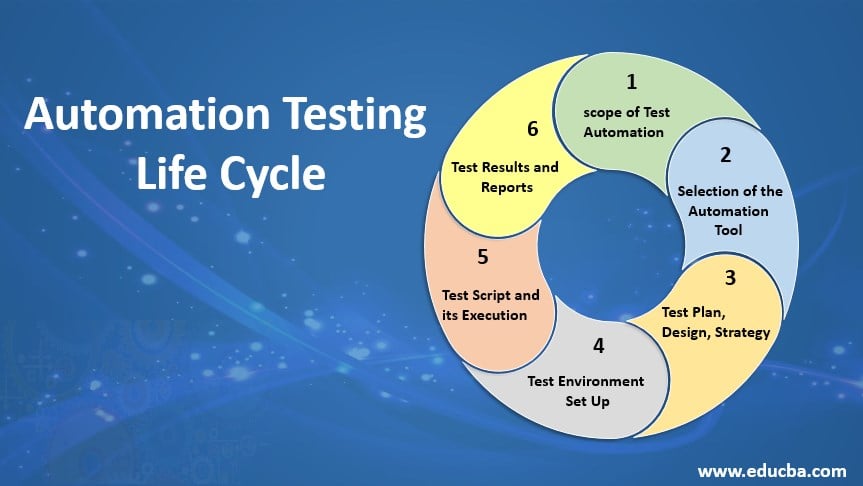Reliable Automation Testing: Enhancing Software Reliability and Speed
Wiki Article
Making Certain Success in Automation Checking: Key Metrics, Difficulties, and Solutions Every QA Group Must Know
In the realm of software application quality control, the landscape of automation testing is ever-evolving, demanding a meticulous technique to ensure seamless operations. Trick metrics work as the compass assisting QA groups through the huge surface of test automation, clarifying progression and areas for enhancement. Challenges loom big, usually casting shadows on the course to success. By understanding these obstacles and applying effective services, QA teams can browse via complexities with skill. The journey to mastering automation testing is led with subtleties that require an eager eye for surveillance, evaluation, and continuous improvement. automation testing. As the market moves ahead, the quest for optimal performance in automation testing remains a constant pursuit, urging QA teams to equip themselves with the understanding and approaches essential for triumph.Significance of Key Metrics
Recognizing the value of essential metrics is essential for reviewing the performance and effectiveness of automation testing procedures. Secret metrics function as measurable procedures that offer important understandings right into different aspects of the screening process, such as test protection, examination execution time, flaw thickness, and test case efficiency. By evaluating these metrics, QA groups can identify bottlenecks, ineffectiveness, and areas for enhancement within their automation screening framework.One critical facet of crucial metrics is their capability to track development and keep track of the overall wellness of the screening procedure (automation testing). They make it possible for stakeholders to make educated decisions based upon data-driven understandings, which can lead to a lot more effective testing techniques and much better source allowance. Furthermore, vital metrics can assist teams established reasonable goals, gauge the success of automation initiatives, and demonstrate the ROI of automation testing initiatives

Common Obstacles Encountered
Difficulties generally experienced in automation screening processes can dramatically impact the total efficiency and efficiency of QA groups. Automation testing may not cover all elements of testing, such as functionality and customer experience testing, which still require manual treatment. Getting rid of these challenges requires appropriate preparation, critical test situation selection, robust maintenance procedures, adequate sources, and a clear understanding of the constraints of automation screening.Effective Solutions for Obstacles
To deal with the obstacles experienced in automation testing, carrying out efficient services is crucial for boosting the efficiency and productivity of QA groups. One key option is to spend in durable training programs for QA groups to ensure they have the essential abilities to efficiently use automation tools. Training can connect understanding spaces, boost understanding of automation frameworks, and improve scripting capacities, eventually causing more reliable examination production and implementation.
One more crucial remedy is to establish clear interaction channels within the QA group and with various other stakeholders, such as developers and task managers. Reliable communication aids in lining up expectations, sharing progression updates, and immediately dealing with concerns or obstructions that might develop throughout the automation testing process.

Monitoring and Evaluation Strategies
Carrying out efficient monitoring and evaluation strategies is vital for making sure the success and effectiveness of automation screening procedures. By making use of tracking tools, QA groups can track the performance of examination scripts, identify traffic jams, and pinpoint locations for improvement. Real-time Discover More Here surveillance enables quick discovery of issues, enabling fast reaction and resolution. In addition, examining examination outcomes and metrics supplies valuable understandings into the top quality of the software application being examined and the performance of the testing approach.One trick technique in monitoring and evaluation is making use of control panels that consolidate appropriate metrics and KPIs in an aesthetically available style. These control panels offer an extensive review of examination implementation status, test protection, issue trends, and other essential information. Regularly examining and assessing these control panels can help QA pop over to this web-site teams make notified choices, focus on jobs, and maximize testing efforts.
Moreover, applying automated signals and notifications based upon predefined thresholds can enhance proactive monitoring and prompt treatment. By establishing signals for efficiency deviations or test failures, teams can address issues promptly and avoid them from escalating. In general, tracking and evaluation methods play a crucial duty in making certain the efficiency and success of automation testing efforts.
Continuous Improvement Strategies
Enhancing the efficacy of automation screening processes necessitates the consistent improvement of approaches and methods. Continual enhancement methods are critical for QA groups to adjust to advancing technologies and supply high-grade software application products. One crucial approach to boosting automation screening procedures is to conduct routine reviews and retrospectives. By analyzing previous screening cycles, groups can identify bottlenecks, inefficiencies, and areas for improvement. Executing comments loops and incorporating lessons found out right into future testing frameworks can produce significant improvements in time.
Final Thought
In final thought, it is essential for QA groups to recognize the essential metrics, difficulties, and solutions in automation testing to make sure success. By meticulously monitoring and analyzing data, applying reliable services to common difficulties, and continuously boosting techniques, QA groups can enhance their screening processes and provide high-quality software. Sticking to these practices will ultimately cause much more effective and reliable automation screening techniques.By examining these metrics, QA groups can determine bottlenecks, inadequacies, and areas for improvement within their automation screening framework.
In addition, key metrics can help teams set reasonable goals, determine the success of automation efforts, and show the ROI of automation screening initiatives.
Difficulties generally experienced in automation screening procedures can dramatically impact the overall effectiveness and effectiveness of QA groups. Automation screening may not cover all elements of screening, such as usability and user experience testing, which still call for manual treatment.In final thought, it is important for QA have a peek at this website groups to comprehend the key metrics, difficulties, and services in automation screening to make certain success.
Report this wiki page